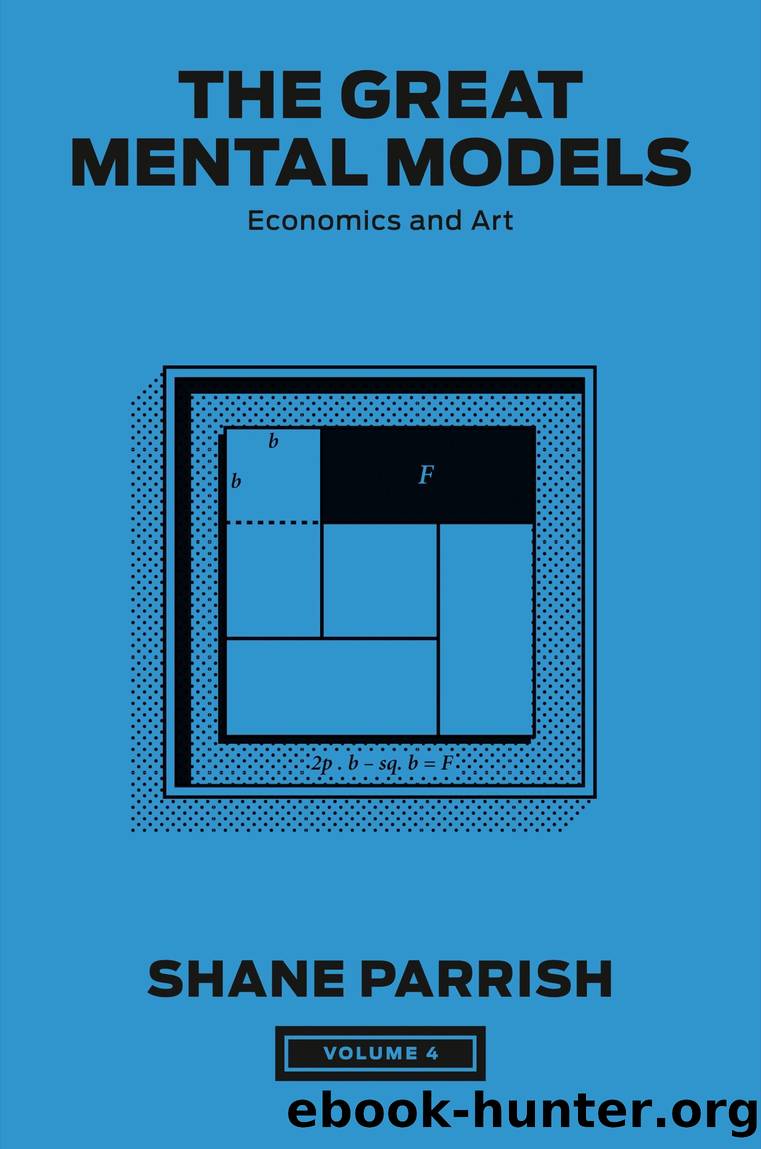The Great Mental Models, Volume 4 by Shane Parrish & Rhiannon Beaubien

Author:Shane Parrish & Rhiannon Beaubien [Parrish, Shane & Beaubien, Rhiannon]
Language: eng
Format: epub
Publisher: Penguin Publishing Group
Published: 2024-10-15T00:00:00+00:00
Every Living Thing
How do you begin to understand yourself and your place in the world? To know what you are, you must know what you are not.
When it comes to your physical body, at first, this seems easy. You are a human; you are not a tiger. Looking around, you can differentiate between pumpkins and roses, flamingos and guinea pigs. Classification seems easy.
Scientific classification, however, has a lot in common with genre: start digging, and the edges become blurry.
We have billions of individual microbes, representing at least thousands of species, living on or in each one of us, many of which are critical to our functioning. At what point do they become us? If we canât live without them, are they separate, or are we just one component of a more complicated genre of being? Or, consider two ants that look alike but reproduce differently, or two beetles that reproduce the same way but look different. Does each difference get its own classification? How different can two organisms be while still belonging to the same group?
Something we learn from genre is that classification becomes a gray area at the margins. As new organisms are discovered, the distinctions become less clear. âThe boundaries between organisms are at best fuzzy,â biologist Rob Dunn writes in Every Living Thing, âthe boundaries between species more so.â[19]
Why is this all important?
In some ways, to name something is to bring it into existence. Not physical existence, because the thing still physically exists with or without being named. Rather, naming brings something into the collective consciousness. When we discover new organisms, we name them. We give them a place on the map of life. We decide how and where they belong and, in doing so, learn about them.
In his book, Dunn explains, âEvery culture known names species, then groups them, and then builds them into knowledge and stories. Naming, and the learning associated with it, is part of what makes us human.â[20] Historically, this learning has been very practical: We learn what tastes good and what can cause pain or make us sick. We learn what to avoid and what to seek out. And early on, we probably grouped things we encountered based on these types of categories. Instead of âinsectâ or âbird,â we might have grouped the organisms in our environment based on their propensity to cause us harm.
If we canât classify something, if we canât label it and figure out where it belongs, we canât build relationships between individual units. If every animal and plant was considered only as an individual, the world would be overwhelming. Being able to group trees into the category âmaple,â or certain flying insects into the category âwasp,â helps us navigate our world, making decisions about how to interact with it.
One idea the model of genre illuminates is that classification systems are only useful if they function as a common language. If we think about the arts, genres are essential for marketing. How am I going to attract you to
Download
This site does not store any files on its server. We only index and link to content provided by other sites. Please contact the content providers to delete copyright contents if any and email us, we'll remove relevant links or contents immediately.
| Bookkeeping | Business Mathematics |
| Business Writing | Communications |
| Decision Making | Negotiating |
| Project Management | Running Meetings & Presentations |
| Secretarial Aids & Training | Time Management |
| Training |
Nudge - Improving Decisions about Health, Wealth, and Happiness by Thaler Sunstein(7615)
Deep Work by Cal Newport(6877)
Principles: Life and Work by Ray Dalio(6204)
Factfulness: Ten Reasons We're Wrong About the World – and Why Things Are Better Than You Think by Hans Rosling(4692)
The Doodle Revolution by Sunni Brown(4685)
Eat That Frog! by Brian Tracy(4432)
Thinking in Bets by Annie Duke(4152)
Hyperfocus by Chris Bailey(4045)
Visual Intelligence by Amy E. Herman(3721)
Writing Your Dissertation in Fifteen Minutes a Day by Joan Bolker(3669)
Ogilvy on Advertising by David Ogilvy(3503)
How to Win Friends and Influence People in the Digital Age by Dale Carnegie & Associates(3495)
Hidden Persuasion: 33 psychological influence techniques in advertising by Marc Andrews & Matthijs van Leeuwen & Rick van Baaren(3472)
How to win friends and influence people by Dale Carnegie(3397)
The Pixar Touch by David A. Price(3362)
Schaum's Quick Guide to Writing Great Short Stories by Margaret Lucke(3318)
Deep Work: Rules for Focused Success in a Distracted World by Cal Newport(3145)
Work Clean by Dan Charnas(3048)
The Slow Fix: Solve Problems, Work Smarter, and Live Better In a World Addicted to Speed by Carl Honore(2947)
